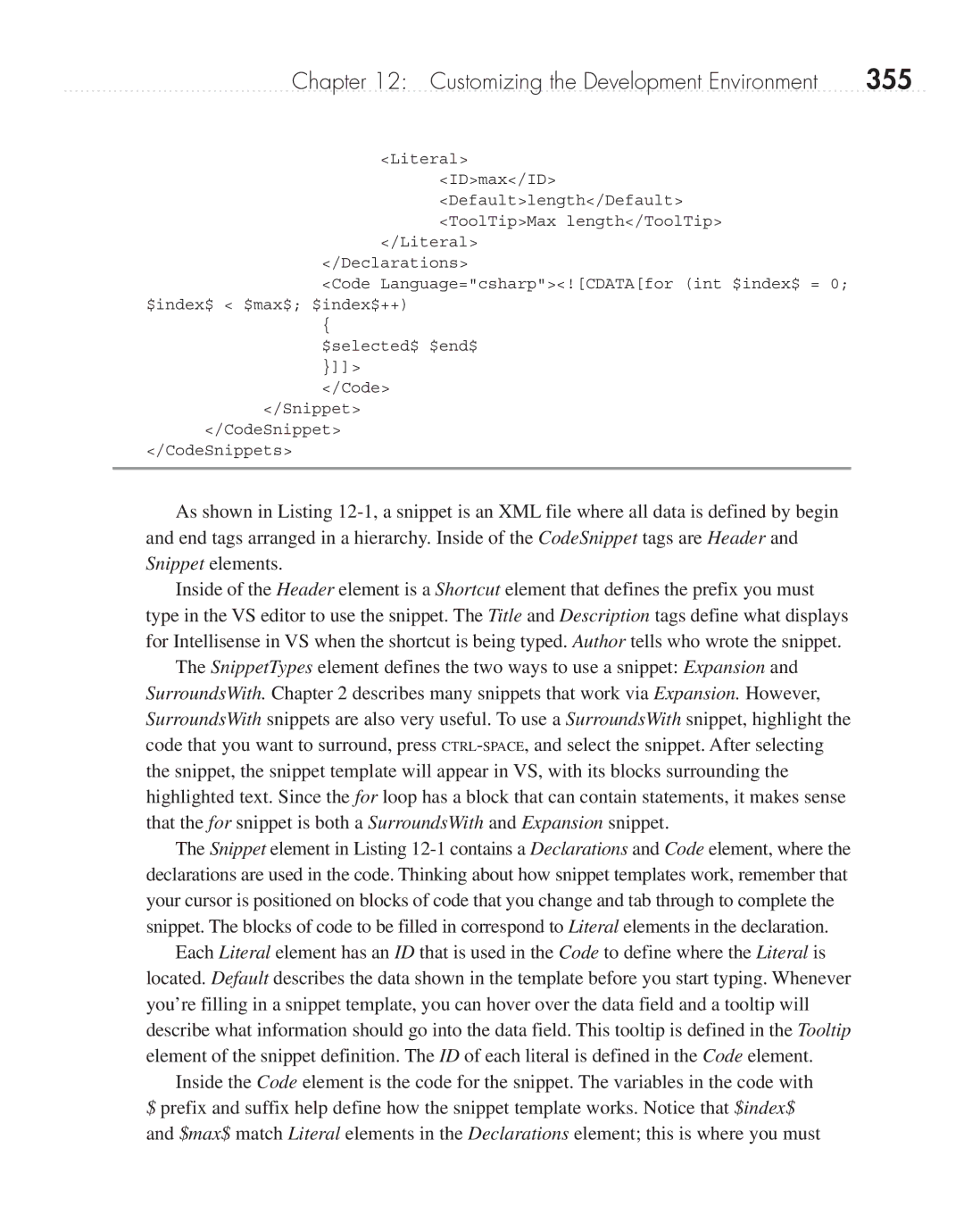
Chapter 12: Customizing the Development Environment | 355 |
<Literal>
<ID>max</ID>
<Default>length</Default> <ToolTip>Max length</ToolTip>
</Literal>
</Declarations>
<Code Language="csharp"><![CDATA[for (int $index$ = 0; $index$ < $max$; $index$++)
{
$selected$ $end$ }]]>
</Code>
</Snippet>
</CodeSnippet>
</CodeSnippets>
As shown in Listing
Inside of the Header element is a Shortcut element that defines the prefix you must type in the VS editor to use the snippet. The Title and Description tags define what displays for Intellisense in VS when the shortcut is being typed. Author tells who wrote the snippet.
The SnippetTypes element defines the two ways to use a snippet: Expansion and SurroundsWith. Chapter 2 describes many snippets that work via Expansion. However, SurroundsWith snippets are also very useful. To use a SurroundsWith snippet, highlight the code that you want to surround, press
The Snippet element in Listing
Each Literal element has an ID that is used in the Code to define where the Literal is located. Default describes the data shown in the template before you start typing. Whenever you’re filling in a snippet template, you can hover over the data field and a tooltip will describe what information should go into the data field. This tooltip is defined in the Tooltip element of the snippet definition. The ID of each literal is defined in the Code element.
Inside the Code element is the code for the snippet. The variables in the code with $ prefix and suffix help define how the snippet template works. Notice that $index$ and $max$ match Literal elements in the Declarations element; this is where you must
